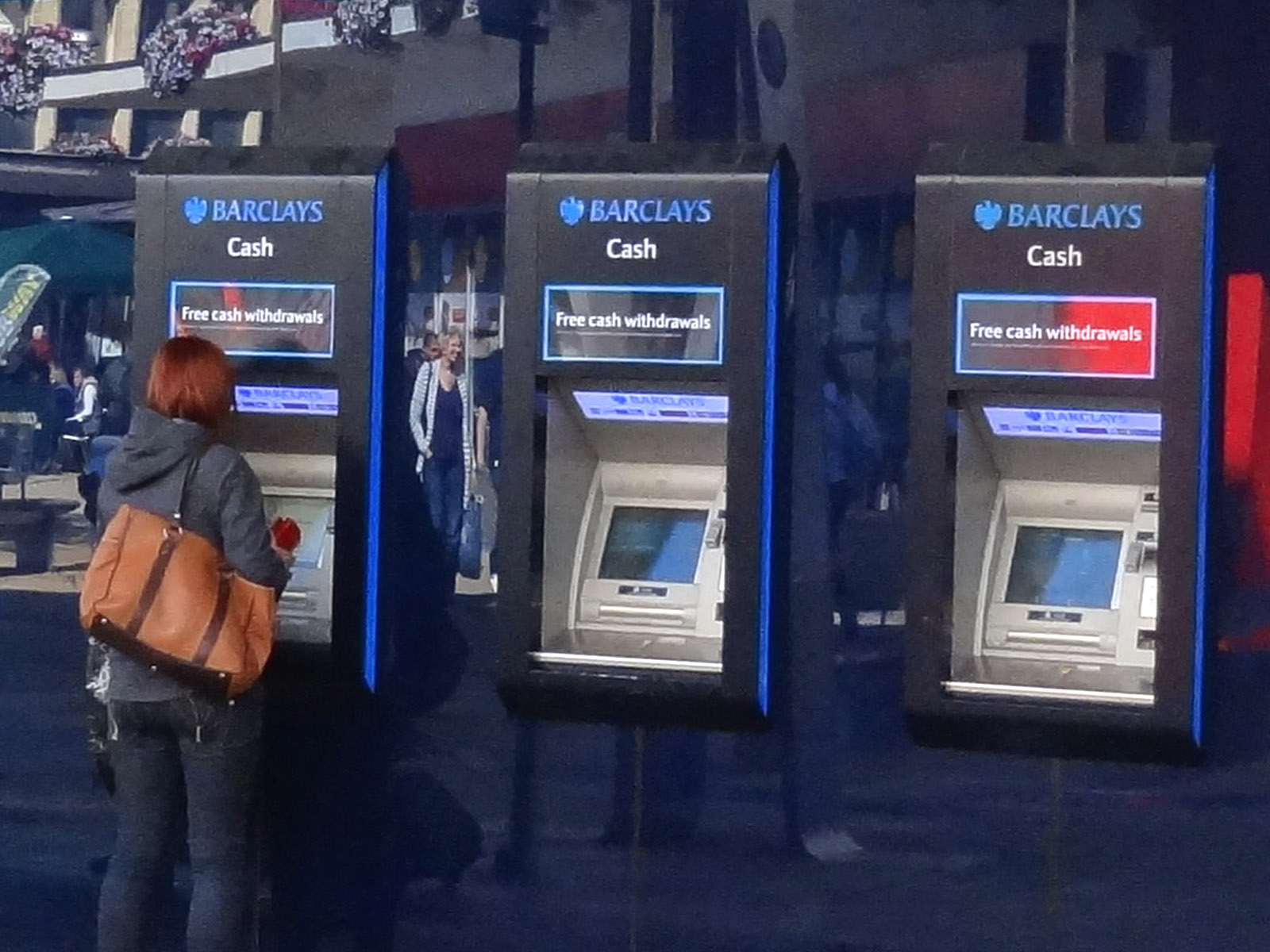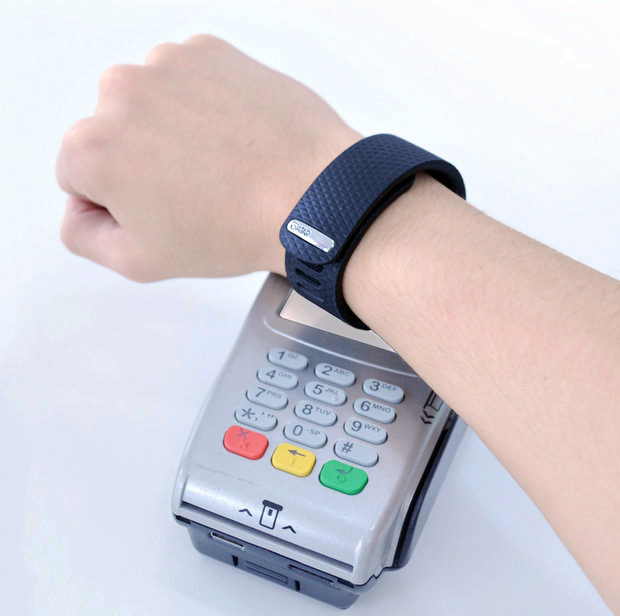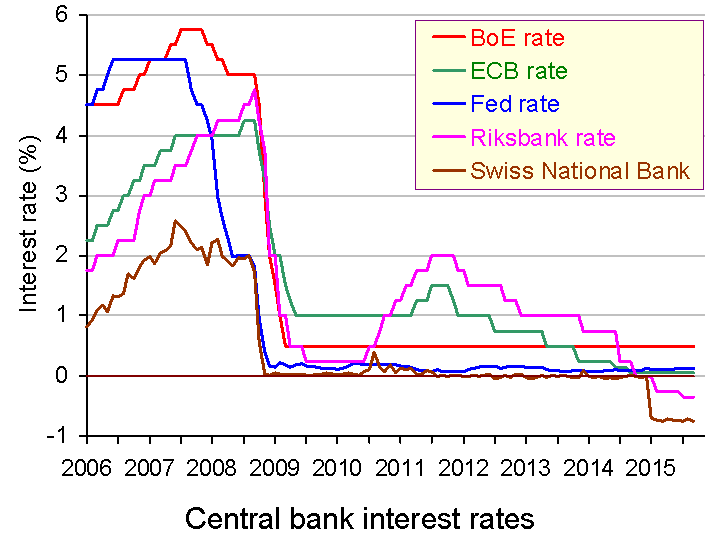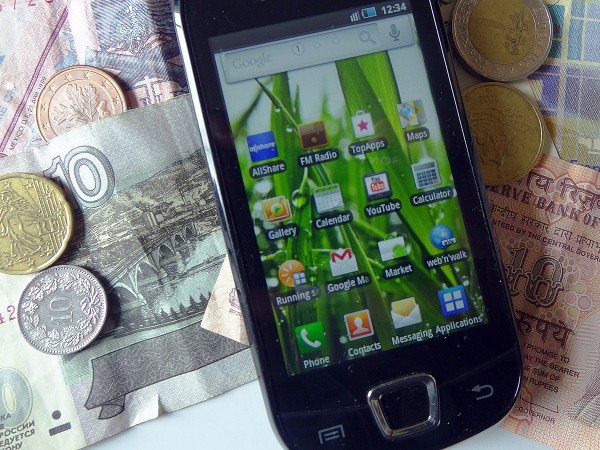 Latest data from the UK banking trade association, UK Finance, show that cash payments have continued to decline, while contactless and mobile payments have risen dramatically. In 2018, cash payments fell 16% to 11.0 billion payments and constituted just 28% of total payments; the compares with 60% in 2008 and a mere 9% projected for 2028. By contrast, in 2018, debit card payments increased 14% to 15.1 billion payments. Credit card payments increased 4% to stand at 3.2 billion payments. Mobile payments though media such as Apple Pay, Google Pay and Samsung Pay, although still a relatively small percentage, have also increased rapidly, with 16% of the adult population registered for mobile payments, compared with just 2% in 2016.
Latest data from the UK banking trade association, UK Finance, show that cash payments have continued to decline, while contactless and mobile payments have risen dramatically. In 2018, cash payments fell 16% to 11.0 billion payments and constituted just 28% of total payments; the compares with 60% in 2008 and a mere 9% projected for 2028. By contrast, in 2018, debit card payments increased 14% to 15.1 billion payments. Credit card payments increased 4% to stand at 3.2 billion payments. Mobile payments though media such as Apple Pay, Google Pay and Samsung Pay, although still a relatively small percentage, have also increased rapidly, with 16% of the adult population registered for mobile payments, compared with just 2% in 2016.
But what are the implications of this ‘dash from cash’? On the plus side, clearly there are advantages to consumers. A contactless payment is often more convenient than cash and does not require periodic visits to a cash machine (ATM) – machines that are diminishing in number and may be some distance away if you live in the countryside. What is more, card payments allow purchasing online – a form of shopping that continues to grow. Also, if a card is stolen or lost, you can cancel it; if cash is stolen or lost, you cannot cancel that.
 Then there are benefits to vendors. Cashing up is time consuming and brings little or no benefit in terms of bank charges. These are typically around 0.75% for cash deposits and roughly the same for handling debit card payments (around 0.7%). What is more, with the closure of many bank branches, it is becoming harder for many businesses to deposit cash.
Then there are benefits to vendors. Cashing up is time consuming and brings little or no benefit in terms of bank charges. These are typically around 0.75% for cash deposits and roughly the same for handling debit card payments (around 0.7%). What is more, with the closure of many bank branches, it is becoming harder for many businesses to deposit cash.
Finally, there is the problem that many illegal activities involve cash payments. What is more, cash payments can be used as a means of avoiding tax as they can be ‘kept off the books’.
But there are also dangers in the dash from cash. Although the majority of people now use cards for at least some of their transactions, many older people and people on low incomes rely on cash and do not use online banking. With bank branches and ATMs closing, this group is becoming further disadvantaged. As the Access to Cash Review, Final Report states:
Millions of people could potentially be left out of the economy, and face increased risks of isolation, exploitation, debt and rising costs.
Then there is the danger of fraud. As the Financial Times article below states:
The proliferation of new types of payment method has raised concerns over security. Criminals stole £1.2bn in 2018, according to previous data from UK Finance, up from £967m in 2017. This included a rise in fraudsters illegally accessing customers’ accounts and cards.
Complaints about banking scams reached a record high in the past financial year, according to figures in May from the UK’s Financial Ombudsman Service.
One of the biggest dangers, however, of the move to card payments, and especially contactless payments, is that people may be less restrained in their spending. They may be more likely to rack up debt with little concern at the time of spending about repayment. As the Forbes article below states:
 Because items purchased with a credit card have been decoupled from emotion, shoppers can focus on the benefits of the purchase instead of the cost. Thus, paying with a credit card makes it more difficult to focus on the cost or complete a more rational cost–benefit analysis. For example, if a person had to count out $0.99 to purchase an app, they might be less inclined to buy it. However, since we can quickly buy apps with our credit card, the cost seems negligible, and we can focus on the momentary happiness of the purchase.
Because items purchased with a credit card have been decoupled from emotion, shoppers can focus on the benefits of the purchase instead of the cost. Thus, paying with a credit card makes it more difficult to focus on the cost or complete a more rational cost–benefit analysis. For example, if a person had to count out $0.99 to purchase an app, they might be less inclined to buy it. However, since we can quickly buy apps with our credit card, the cost seems negligible, and we can focus on the momentary happiness of the purchase.
Finally, there is the issue of our privacy. Card payments enable companies, and possibly other agencies, to track our spending. This may have the benefits of allowing us to receive tailored advertising, but it may be used as a way of driving sales and encouraging us to take on more debt as well as giving companies a window on our behaviour.
Articles
- Millions choose a cashless lifestyle
BBC News, Kevin Peachey (6/6/19)
- The decline of cash in the UK – in charts
BBC News (7/6/19)
- One in 10 adults in UK have gone ‘cashless’, data shows
The Guardian, Rupert Jones (6/6/19)
- Going contactless is gloriously convenient – for all the wrong people
The Guardian, Peter Ormerod (7/3/19)
- Mobile banking and contactless cards continue to surge in popularity
Financial Times, James Pickford (6/6/19)
- Is a cashless society in Britain near? Banking data suggests just 9% of all payments will be cash by 2028
This is Money, George Nixon (6/6/19)
- Older and poorer communities are left behind by the decline of cash
The Conversation, Daniel Tischer, Jamie Evans and Sara Davies (16/5/19)
- As cash declines, research shows the most deprived communities are left behind
University of Bristol Press Release (16/5/19)
- Do People Really Spend More With Credit Cards?
Forbes, Bill Hardekopf (16/7/18)
- Why Cash Is Quickly Disappearing From China’s Economy—Data Sheet
Fortune, Aaron Pressman and Clay Chandler (5/6/19)
 Cashless in China: Why It Matters
Cashless in China: Why It Matters CNA Insider on YouTube, Joshua Lim (28/10/17)
Reports
Questions
- Summarise the main findings of the UK Payments Market Report 2019
- What are the relative merits of using (a) cash; (b) debit cards; (c) mobile payment?
- Find out what has happened to consumer debt in a country of your choice over the past five years. What are the main determinants of the level of consumer debt?
- How has UK money supply changed over the past five years? To what extent does this reflect changes in the ways people access money in their accounts?
- Why and how is China going ‘cashless’? Does this create any problems?
- Make out a case for and against increasing the £30 limit for contactless payments in the UK.
 If you asked virtually any banker or economist a few years ago whether negative (nominal) interest rates were possible, the answer would almost certainly be no.
If you asked virtually any banker or economist a few years ago whether negative (nominal) interest rates were possible, the answer would almost certainly be no.
Negative real interest rates have been common at many points in time – whenever the rate of inflation exceeds the nominal rate of interest. People’s debts and savings are eroded by inflation as the interest due or earned does not keep pace with rising prices.
But negative nominal rates? Surely this could never happen? It was generally believed that zero (or slightly above zero) nominal rates represented a floor – ‘a zero lower bound’.
The reasoning was that if there were negative nominal rates on borrowing, you would effectively be paid by the bank to borrow. In such a case, you might as well borrow as much as you can, as you would owe less later and could pocket the difference.
In such a case, you might as well borrow as much as you can, as you would owe less later and could pocket the difference.
A similar argument was used with savings. If nominal rates were negative, savers might as well withdraw all their savings from bank accounts and hold them as cash (perhaps needing first to buy a safe!) Given, however, that this might be inconvenient and potentially costly, some people may be prepared to pay banks for looking after their savings.
Central bank interest rates have been hovering just above zero since the financial crisis of 2008. And now, some of the rates have turned negative (see chart above). The ECB has three official rates:
|
|
| • |
The interest rate on the main refinancing operations (MRO), which provide the bulk of liquidity to the banking system. |
| • |
The rate on the deposit facility, which banks may use to make overnight deposits with the Eurosystem. |
| • |
The rate on the marginal lending facility, which offers overnight credit to banks from the Eurosystem. |
The first of these is the most important rate and remains above zero – just. Since September 2014, it has been 0.05%. This rate is equivalent to the Bank of England’s Bank Rate (currently still 0.5%) and the Fed’s Federal Funds Rate (currently still between 0% and 0.25%).
The third of the ECB’s rates is currently 0.3%, but the second – the rate on overnight deposits in the ECB by banks in the eurozone – is currently –0.2%.  In other words, banks have to pay the ECB for making these overnight deposits (deposits that can be continuously rolled over). The idea has been to encourage banks to lend rather than simply keeping unused liquidity.
In other words, banks have to pay the ECB for making these overnight deposits (deposits that can be continuously rolled over). The idea has been to encourage banks to lend rather than simply keeping unused liquidity.
In Nordic countries, the experiment with negative rates has gone further. With plenty of slack in the Swedish economy, negative inflation and an appreciating krona, the Swedish central bank – the Riksbank – cut its rates below zero.
Many City analysts believe that the Riksbank will continue cutting, reducing its key interest rate to minus 0.5% by the end of the year [it is currently 0.35%]. Switzerland’s is already deeper still, at minus 0.75%, while Denmark and the eurozone have joined them as members of the negative zone.
But the nominal interest rate on holding cash is, by definition, zero. If deposit rates are pushed below zero, then will more and more people hold cash instead?  The hope is that negative nominal interest rates on bank accounts will encourage people to spend. It might, however, merely encourage them to hoard cash.
The hope is that negative nominal interest rates on bank accounts will encourage people to spend. It might, however, merely encourage them to hoard cash.
The article below from The Telegraph looks at some of the implications of an era of negative rates. The demand for holding cash has been increasing in many countries and, along with it, the supply of banknotes, as the chart in the article shows. Here negative interest are less effective. In Nordic countries, however, the use of cash is virtually disappearing. Here negative interest rates are likely to be more effective in boosting aggregate demand.
Article
How Sweden’s negative interest rates experiment has turned economics on its head The Telegraph, Peter Spence (27/9/15)
Data
Central bank and monetary authority websites Bank for International Settlements
Central banks – summary of current interest rates global-rates.com
Questions
- Distinguish between negative real and negative nominal interest rates.
- What is the opportunity cost of holding cash – the real or the nominal interest rate forgone by not holding it in a bank?
- Are there any dangers of central banks setting negative interest rates?
- Why may negative interest rates be more effective in Sweden than in the UK?
- ‘Andy Haldane, a member of the Monetary Policy Committee (MPC) … suggested that to achieve properly negative rates, the abolition of cash itself might be necessary.’ Why?
- Why does Switzerland have notes of SF1000 and the eurozone of €500? Should the UK have notes of £100 or even £500?
- Why do some banks charge zero interest rates on credit cards for a period of time to people who transfer their balances from another card? Is there any incentive for banks to cut interest rates on credit cards below zero?
 Market trading has existed for centuries and in many respects it hasn’t changed very much. One thing that has developed is the means of exchange. Goods used to be traded for other goods – for example 1 pig for 4 chickens! But then money was developed as a means of exchange and then came cheques and plastic.
Market trading has existed for centuries and in many respects it hasn’t changed very much. One thing that has developed is the means of exchange. Goods used to be traded for other goods – for example 1 pig for 4 chickens! But then money was developed as a means of exchange and then came cheques and plastic.
However, for many market traders, accepting credit and debit cards is relatively costly. It involves paying a monthly contract, which for many traders is simply not worthwhile, based on the quantity and value of the transactions. But, for many customers using debit or credit cards is the preferred method of payment and the fact that some traders only accept cash can be a deterrent to them making purchases and this therefore reduces the sales of the market traders.
 But, with advances in technology a new way of paying has emerged. Small card readers can now be plugged into iphones, ipads, other tablets and smartphones. By putting a customer’s card into this device customers can then pay by card and either sign for their purchase or use the phone to enter their security details. There are plan for these companies to offer chip and pin technology to further ease payment by card on market stalls. The traders pay a small commission per transaction, but aside from that, the initial start-up cost is minimal and it is likely to encourage more customers to use markets. Jim Stewart, the Director of a firm that has begun using this technology said:
But, with advances in technology a new way of paying has emerged. Small card readers can now be plugged into iphones, ipads, other tablets and smartphones. By putting a customer’s card into this device customers can then pay by card and either sign for their purchase or use the phone to enter their security details. There are plan for these companies to offer chip and pin technology to further ease payment by card on market stalls. The traders pay a small commission per transaction, but aside from that, the initial start-up cost is minimal and it is likely to encourage more customers to use markets. Jim Stewart, the Director of a firm that has begun using this technology said:
I think it’s definitely going to take off, the world is going that way … The money has always appeared in my bank account, no transactions have been declined, my accountant is happy, it’s all been good.
Some customers have raised concerns about the security of these transactions, as they have to put their cards into someone else’s ipad. However, traders have said that there are no risks and that customers can be sent a receipt for their purchase. The following few articles look at this latest (and other) technological developments.
Smartphone card payment system seeks small firms BBC News, Rob Howard (19/1/13)
POS Trends: What’s new for 2013 Resource News (17/1/13)
Payments by text message service to launch in UK in Spring 2014 BBC News (15/1/13)
Questions
- What are fixed cost and why does having a traditional card payment machine represent a fixed cost for a firm?
- How might this new technology affect a firm’s sales and profits?
- Will there be an increase in the firm’s variable costs from adopting this technology?
- Using a cost and revenue diagram, put your answers to questions 1 – 3 into practice and show how it will shift them and thus how the equilibrium may change for a market trader.
- What are the properties of money that allow it to be a good medium of exchange?
- How will this increased use of debit and credit cards affect the demand for money? Use a diagram to illustrate your answer.
The banking sector was at the heart of the credit crunch and it may also be at the heart of the recovery. Too much lending to those who could not repay has now translated into government encouragement and targets to stimulate further lending. Banks made a deal with the government (Project Merlin) to lend £76bn to small and medium sized companies (SMEs) in 2011, however, the data for the first quarter of 2011 shows that the top five UK banks lent only £16.8bn, some £2.2bn short of their quarterly target (about 12%). Despite this sum still being a significant figure, small companies have said that they are still finding it difficult to obtain credit from banks. A poll found 44% of companies that asked for a loan were turned down and many were discouraged from even applying as they had almost no chance.
Encouraging banks to lend and hence stimulating investment by businesses may prove crucial to the UK’s recovery. Vince Cable’s words with regard to lending emphasise its importance:
“We will monitor the banks’ performance extremely closely and if they fail to meet the commitments they have agreed we will examine options for further action.”
If small businesses can obtain credit, it will help them to develop and expand and this should have knock on effects on the rest of the economy. Jobs could be created, giving more people an income, which in turn should stimulate consumption, further investment and finally aggregate demand. It may not be the case that the UK’s recovery is entirely dependent on bank lending, but it could certainly play an important role, hence the government’s insistence for further lending. It may also act to create confidence in the economy. The following articles consider the bank’s role in providing credit to SMEs.
Articles
Bank lending falling short of promises by £25m a day Mail Online, Becky Barrow (24/5/11)
Cable tells banks to increase lending to small firms BBC News (23/5/11)
Bank lending targets: What the experts say Guardian, Alex Hawkes (23/5/11)
Major banks fail to meet their lending targets Independent, Sean Farrell (24/5/11)
Banks on course to miss small business lending target Guardian, Philip Inman (23/5/11)
Project Merlin needs to be less woolly and more wizard Guardian, Nils Pratley (23/5/11)
Bankers caused the crash and now they strangle recovery Guardian, Polly Toynbee (27/5/11)
Data
Trends in Lending Bank of England (see in particular, Lending to UK Businesses)
Questions
- Why have banks not met their lending targets for the first quarter of 2011?
- Why is project Merlin so potentially important to the recovery of the economy?
- Using an AD/AS diagram, illustrate the possible effects of further lending.
- Are there any possible adverse consequences of too much lending?
- Why might banks have little incentive to increase their lending to SMEs?
Since March 2009, the Bank of England has engaged in a process of quantitative easing (QE). Over the period to January 2010 the Bank of England injected £200 billion of new money into the economy by purchasing assets from the private sector, mainly government bonds. The assets were purchased with new money, which enters the economy as credits to the accounts of those selling the assets to the Bank of England. This increase in narrow money (the monetary base) is then able to form the basis of credit creation, allowing broad money (M4) to increase by a multiple of the increased monetary base. In other words, injecting £200 billion allows M4 to increase by considerably more.
But just how much more will M4 rise? How big is the money multiplier? This depends on the demand for loans from banks, which in turn depends on the confidence of business and households. With the recovery only just beginning, demand is still very dampened. Credit creation also depends on the willingess of banks to lend. But this too has been dampened by banks’ desire to increase liquidity and expand their capital base in the wake of the credit crunch.
Not surprisingly, the growth in M4 has been sluggish. Between March and Decmber 2009, narrow money (notes, coin and banks’ reserve balances in the Bank of England) grew from £91bn to £203bn (an increase of 123%). M4, however, grew from £2011bn to £2048bn: an increase of only 1.8%. In fact, in December it fell back from £2069bn in November.
Despite the continued sluggishness of the economy, at its February meeting the Bank of England announced an end to further quantitiative easing – at least for the time being. Although Bank Rate would be kept on hold at 0.5%, there would be no further injections of money. Part of the reason for this is that there is still considerable scope for a growth in broad money on the basis of the narrow money already created. If QE were to continue, there could be excessive broad money in a few months’ time and that could push inflation well above target. As it is, rising costs have already pushed inflation above the 2% target (see Too much of a push from costs but no pull from demand).
So will this be an end to quantitative easing? The following articles explore the question.
Bank of England halts quantitative easing Guardian, Ashley Seager (4/2/10)
Bank calls time on quantitative easing (including video) Telegraph, Edmund Conway (5/2/10)
Bank of England’s time-out for quantitative easing plan BBC News (4/2/10)
Shifting goalposts keep final score in question Financial Times, Chris Giles and Jessica Winch (5/2/10)
Bank halts QE at £200bn despite ‘sluggish’ recovery Independent, Sean O’Grady (5/2/10)
Easy does it: No further QE BBC News blogs, Stephanomics, Stephanie Flanders (4/2/10)
Leading article: Easing off – but only for now Independent (5/2/10)
Not easy Times Online (5/2/10)
Quantitative easing: What the economists say Guardian (4/2/10)
Questions
- Explain how quantitative easing works?
- What determines the rate of growth of M4?
- Why has the Bank of England decided to call a halt to quantiative easing – at least for the time being?
- What is the transmission mechanism whereby an increase in the monetary base affects real GDP?
- What role does the exchange rate play in the transmission mechanism?
- Why is it difficult to predict the effect of an increase in the monetary base on real GDP?
- What will determine whether or not the Bank of England will raise interest rates in a few months’ time?
 Latest data from the UK banking trade association, UK Finance, show that cash payments have continued to decline, while contactless and mobile payments have risen dramatically. In 2018, cash payments fell 16% to 11.0 billion payments and constituted just 28% of total payments; the compares with 60% in 2008 and a mere 9% projected for 2028. By contrast, in 2018, debit card payments increased 14% to 15.1 billion payments. Credit card payments increased 4% to stand at 3.2 billion payments. Mobile payments though media such as Apple Pay, Google Pay and Samsung Pay, although still a relatively small percentage, have also increased rapidly, with 16% of the adult population registered for mobile payments, compared with just 2% in 2016.
Latest data from the UK banking trade association, UK Finance, show that cash payments have continued to decline, while contactless and mobile payments have risen dramatically. In 2018, cash payments fell 16% to 11.0 billion payments and constituted just 28% of total payments; the compares with 60% in 2008 and a mere 9% projected for 2028. By contrast, in 2018, debit card payments increased 14% to 15.1 billion payments. Credit card payments increased 4% to stand at 3.2 billion payments. Mobile payments though media such as Apple Pay, Google Pay and Samsung Pay, although still a relatively small percentage, have also increased rapidly, with 16% of the adult population registered for mobile payments, compared with just 2% in 2016. Then there are benefits to vendors. Cashing up is time consuming and brings little or no benefit in terms of bank charges. These are typically around 0.75% for cash deposits and roughly the same for handling debit card payments (around 0.7%). What is more, with the closure of many bank branches, it is becoming harder for many businesses to deposit cash.
Then there are benefits to vendors. Cashing up is time consuming and brings little or no benefit in terms of bank charges. These are typically around 0.75% for cash deposits and roughly the same for handling debit card payments (around 0.7%). What is more, with the closure of many bank branches, it is becoming harder for many businesses to deposit cash.Because items purchased with a credit card have been decoupled from emotion, shoppers can focus on the benefits of the purchase instead of the cost. Thus, paying with a credit card makes it more difficult to focus on the cost or complete a more rational cost–benefit analysis. For example, if a person had to count out $0.99 to purchase an app, they might be less inclined to buy it. However, since we can quickly buy apps with our credit card, the cost seems negligible, and we can focus on the momentary happiness of the purchase.
 Cashless in China: Why It Matters
Cashless in China: Why It Matters 




